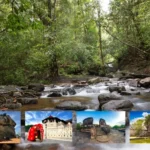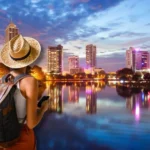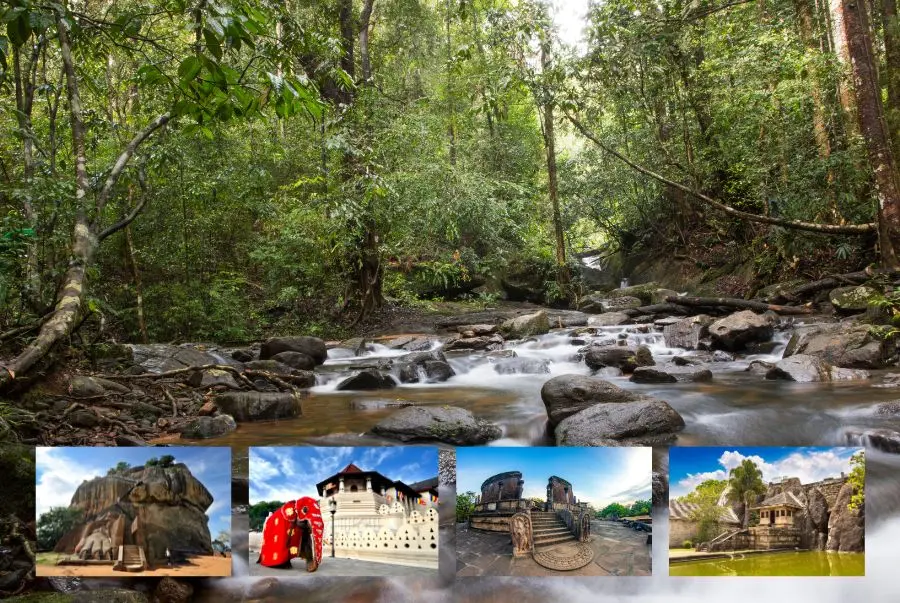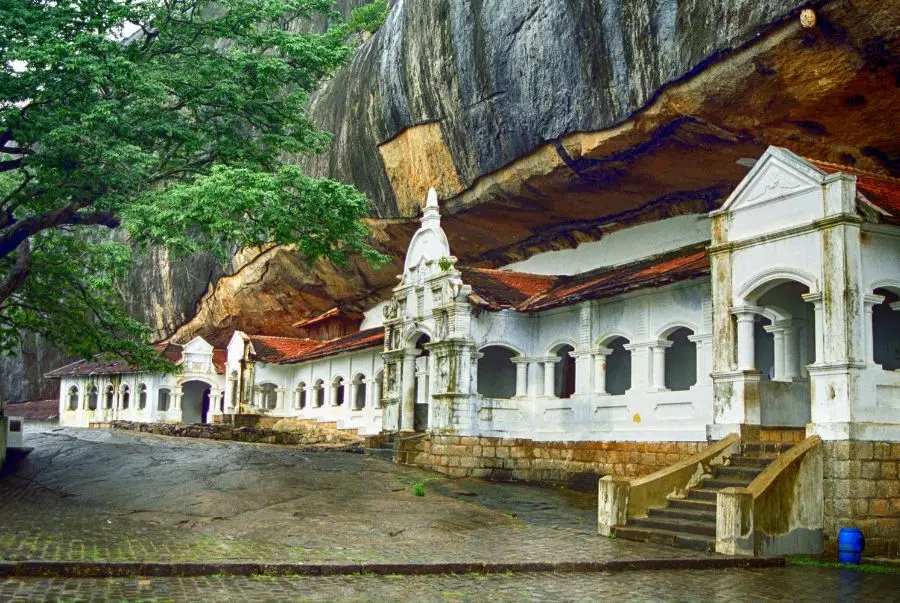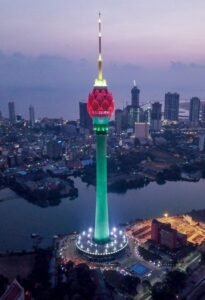Sri Lanka, with its stunning beaches, lush rain forests, vibrant culture, and historical treasures, is a year-round destination. However, like any tropical island, the best time to visit Sri Lanka can depend on various factors such as weather, seasonal events, and the kind of experience you’re seeking. In this comprehensive month-by-month breakdown, we’ll guide you through Sri Lanka’s weather patterns, the best activities to enjoy, and when to plan your visit to make the most of your trip.
January – Ideal for Exploring the Cultural Triangle and Southern Beaches
Weather: January falls during Sri Lanka’s dry season on the southwest coast, making it an ideal time to visit the Cultural Triangle, southern beaches like Unawatuna, and Hikkaduwa. The central hills, including Kandy and Nuwara Eliya, also offer pleasant weather with cooler temperatures.
Best Activities:
- Explore ancient cities like Anuradhapura and Polonnaruwa.
- Enjoy whale watching off the coast of Mirissa.
- Relax on the southern beaches.
Tip: January is one of the peak tourist months in Sri Lanka, so expect higher prices in popular tourist areas. Book your tour with Tranz Ceylon Tours & Travels for a seamless experience.
February – A Great Month for Sightseeing and Beach Relaxation
Weather: February offers sunny, dry conditions across most of Sri Lanka. It’s one of the best months for visiting the southwest coast and Cultural Triangle as the weather is pleasant and ideal for outdoor activities.
Best Activities:
- Visit Sigiriya, Kandy, and Horton Plains National Park.
- Enjoy the serene beaches of Bentota and Hikkaduwa.
- Attend cultural events like the Kandy Esala Perahera (if traveling later in the year).
Tip: Take advantage of Tranz Ceylon Tours & Travels customized itineraries for a guided tour to Sri Lanka’s historical and natural wonders during this peak period.
March – Enjoy the Beaches and Scenic Train Rides
Weather: March is an excellent month to visit the west coast and hill country, as the weather is warm and dry, perfect for beach days and outdoor exploration.
Best Activities:
- Beaches: Enjoy the golden sands of Unawatuna and Negombo.
- Train Rides: Take the famous train ride from Kandy to Ella, one of the most scenic rail journeys in the world.
- Visit the Royal Botanical Gardens in Kandy.
Tip: March is still high season, so if you prefer fewer crowds, book your activities and accommodations in advance with Tranz Ceylon Tours & Travels.
April – Hot Weather, Ideal for Beach Vacations
Weather: April is one of the hottest months in Sri Lanka, especially in the lowlands and coastal areas. However, it is a great time for beach lovers to visit the southern and western beaches.
Best Activities:
- Enjoy water sports at Bentota Beach or Mirissa.
- Relax in Galle and visit the Galle Fort.
- Explore Yala National Park for wildlife safaris.
Tip: It can get quite warm, so pack light clothing and hydrate regularly. Tranz Ceylon Tours & Travels offers customized tours to the best beaches and wildlife spots in April.
May – A Quiet Time for Nature and Eco-Tourism
Weather: May marks the start of the monsoon season on the southwest coast, but it’s still a great time to visit Sri Lanka’s northern and eastern beaches like Trincomalee and Nilaveli, which remain dry and sunny.
Best Activities:
- Visit Kumana National Park for birdwatching and wildlife safaris.
- Explore the peaceful beaches of Trincomalee and Passikudah.
- Hike through the Sinharaja Rainforest.
Tip: May is a quieter time for tourists, so you can experience Sri Lanka’s nature spots in a more peaceful, uncrowded atmosphere with Tranz Ceylon Tours & Travels.
June – Monsoon Season Starts in the Southwest, Ideal for the East Coast
Weather: While the southwest is experiencing rain, the east coast of Sri Lanka remains sunny and perfect for beach activities.
Best Activities:
- Explore Arugam Bay for surfing.
- Relax on Pasikudah and Kalkudah beaches.
- Visit Horton Plains National Park and enjoy cool, pleasant weather.
Tip: June is off-peak, meaning fewer crowds. Take advantage of the calm beaches and book your east coast adventure with Tranz Ceylon Tours & Travels.
July – Best for Wildlife Safaris and Cultural Exploration
Weather: The southwest monsoon continues, but it’s a great time for a wildlife safari in parks like Yala and Udawalawe, where wildlife sightings are plentiful due to the dry conditions.
Best Activities:
- Enjoy safaris in Yala National Park or Udawalawe.
- Explore Sigiriya and Polonnaruwa for historical sites.
- Visit Habarana for jungle adventures.
Tip: July is a great month for wildlife enthusiasts. Book a safari tour with Tranz Ceylon Tours & Travels for expert guides and a smooth experience.
August – Perfect for Cultural Festivals and Beach Relaxation
Weather: The weather remains ideal for sightseeing and cultural exploration. August is also the time for Kandy Esala Perahera, a grand festival in Kandy.
Best Activities:
- Participate in the Kandy Esala Perahera.
- Visit Nuwara Eliya and enjoy the cool climate.
- Spend time on the beaches of Mirissa and Bentota.
Tip: August is a busy tourist month due to festivals. Book your accommodations and guided tours early with Tranz Ceylon Tours & Travels for an authentic cultural experience.
September – Good for Nature and the East Coast
Weather: The southwest monsoon starts to wind down, and while the west coast is a little rainy, the east coast continues to enjoy sunny days.
Best Activities:
- Trincomalee is perfect for beach lovers and snorkeling.
- Visit Sinharaja Rainforest for its lush greenery.
- Explore the historical sites in Polonnaruwa and Anuradhapura.
Tip: September is less crowded, making it a peaceful time to explore Sri Lanka’s natural beauty and historical landmarks. Plan your trip with Tranz Ceylon Tours & Travels for a tranquil escape.
October – Start of the Peak Season for Cultural Exploration
Weather: October marks the start of the northeast monsoon, bringing rain to the east coast, but it’s still a great time to visit Colombo and Kandy for cultural exploration.
Best Activities:
- Explore Colombo for city life and culture.
- Visit Royal Botanical Gardens in Kandy.
- Head to Galle Fort for scenic views and history.
Tip: October is a good month for cultural and historical tourism. Let Tranz Ceylon Tours & Travels guide you to Sri Lanka’s top cultural landmarks.
November – Dry Season for Most of the Island
Weather: November is one of the best times to visit Sri Lanka, especially the Cultural Triangle and the southwest coast. The monsoon has mostly ended, and the weather is perfect for outdoor exploration.
Best Activities:
- Explore the Cultural Triangle (Sigiriya, Anuradhapura, Polonnaruwa).
- Enjoy whale watching in Mirissa.
- Relax on the beaches of Bentota and Unawatuna.
Tip: November is a great month to plan your Sri Lankan adventure. Book a tailored tour with Tranz Ceylon Tours & Travels for a seamless travel experience.
December – Peak Season for Sightseeing and Beach Relaxation
Weather: December marks the beginning of the peak season in Sri Lanka, with sunny days and pleasant temperatures, perfect for beach vacations and sightseeing.
Best Activities:
- Visit Sri Maha Bodhi Tree and Ruwanwelisaya in Anuradhapura.
- Enjoy the stunning beaches of Mirissa, Galle, and Colombo.
- Take a scenic train ride from Kandy to Ella.
Tip: December is a busy month for tourism. Book your private tour with Tranz Ceylon Tours & Travels for a personalized experience and guaranteed comfort.
Explore Sri Lanka Year-Round with Tranz Ceylon Tours & Travels
No matter the season, Sri Lanka offers something special for every traveler. Tranz Ceylon Tours & Travels provides customized tours that ensure you get the most out of your visit, whether you’re exploring the Cultural Triangle, relaxing on pristine beaches, or embarking on an unforgettable wildlife safari.
Why Choose Tranz Ceylon Tours & Travels?
- Expert Guides: Our local guides provide in-depth knowledge and personalized experiences.
- Tailored Itineraries: We customize your trip based on your interests and preferences.
- Seamless Travel: From transportation to accommodation, we handle all the details for you.
Book your Sri Lankan getaway today and enjoy a memorable experience with Tranz Ceylon Tours & Travels.

